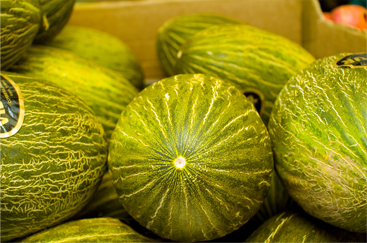A new tool for the treatment of allergic reactions to melons
Researchers at the Universidad Politécnica de Madrid in collaboration with various hospitals have developed a mutant of the major melon allergen that will eliminate the side effects of immunotherapy.
Researchers at the Centre for Plant Biotechnology and Genomics (UPM-INIA) in collaboration with various hospitals have created a mutant developed from profilin, the main protein responsible for the allergy to melon. The mutant is capable of stimulating the immune system to evolve towards a kind of non allergic response. This would eliminate side effects of immunotherapy, which is the only treatment for allergies today. In addition, this mutant could also be used to treat allergies to different pollens.
The amount of people suffering from allergies has increased drastically in recent years and at the moment, the only treatment available is immunotherapy. However, this kind of treatment can cause side effects including anaphylactic shock.
Symptoms of allergies are caused by the reaction of Class IgE immunoglobulin which when faced with an allergen, binds itself to these proteins which triggers an allergic response.
The success of immunotherapy requires that the immune system is stimulated with increasing amounts of allergens; which would result in a change from an allergic response to a non allergic response.
Allergy to melons is the second most important vegetable allergy in Spain. In previous research, they studied the profiling protein of melon, called Cuc m 2, as the trigger responsible for this allergy; they also studied how cross-reactivity is produced between this fruit and many types of pollen.
Based on the junction zone of Cuc m 2 with IgE or Epitope, they generated two mutants (Mut 1 and Mut 2). By changing residues involved in the junction and producing them as recombinant proteins in bacteria. After that, mutants were purified by diverse chromatographic methods and then analyzed for IgE binding capacity in patients allergic to melon.
 While Mut 1 was slightly affected in its binding ability to the IgE regarding the native protein, Mut 2 (Fig. 2) showed a drastic reduction which was measured by various techniques: by using ELISA, with a reduction of 57%; by a test of basophil activation, with a reduction of 33% and lastly by skin testing, with a reduction of 50%.
While Mut 1 was slightly affected in its binding ability to the IgE regarding the native protein, Mut 2 (Fig. 2) showed a drastic reduction which was measured by various techniques: by using ELISA, with a reduction of 57%; by a test of basophil activation, with a reduction of 33% and lastly by skin testing, with a reduction of 50%.
Although the mutant was affecting IgE binding it kept the ability to stimulate the lymphocyte proliferation T, which is needed to stimulate the immune system and to evolve a non allergic response.
In conclusion, Mut 2 is a promising tool to develop immunotherapy in patients allergic to melon without the danger of adverse reactions, due to its decreased binding to IgE, although it can still stimulate the immune system. Apart from allergies to melons, it could allow them to treat allergies to different pollens produced by cross-reactivity amongst profilins.
(1) Tordesillas, L; Gamboa, P; Sanz, ML; Palacin, A; Gomez-Casado, C; Cuesta-Herranz, J; Pacios, LF; Salcedo, G; Diaz-Perales, A. A mutant of the major melon allergen, Cuc m 2, with reduced IgE binding capacity is a good candidate for specific immunotherapy. MOLECULAR IMMUNOLOGY, 49 (3):504-511; DEC 2011.
SOURCE: UPM

